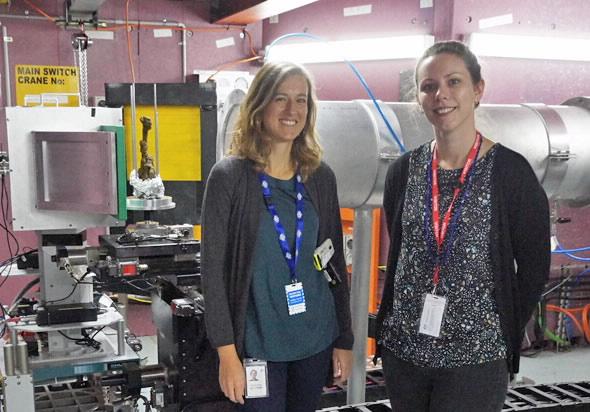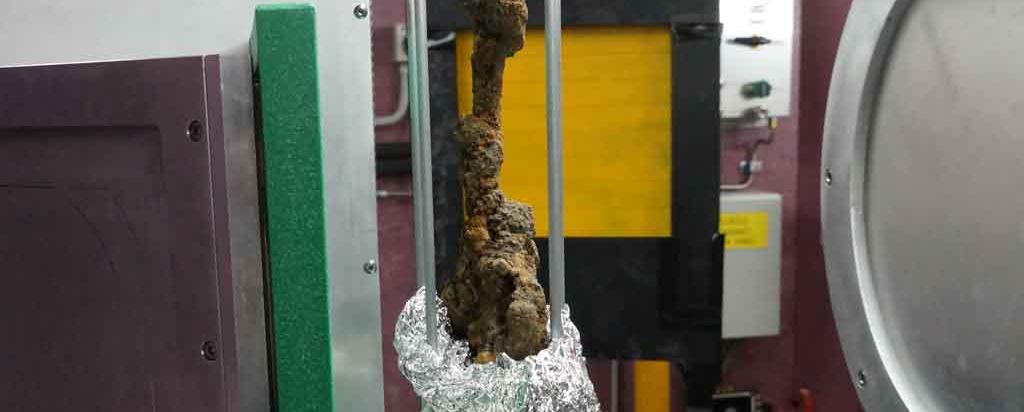

Published on the 30th May 2017 by ANSTO Staff
ANSTO's Australian Centre for Neutron Scattering is assisting with the identification of a heavily corroded historical iron firearm recovered from an archaeological site in Melbourne.
Neutron tomography on the Dingo instrument produced a 3D model of the object, which enabled a virtual clean of the gun.
The artefact, which is believed to be from the period between 1800 and 1918, is severely corroded and heavily encrusted with soil and ferrous material, completely concealing it.
“The thick corrosion and soil layer makes it very difficult to identify the form, dimensions, manufacturing technique and conservation state of the weapon,” said Lauren Keating, Cultural Heritage and Conservation Services, working in collaboration with Heritage Victoria.
“We suspect there is structural loss around the hilt and corrosion related surface loss, which has led to extensive deterioration of the metal.”
“Because the object is very fragile but dense, undertaking non-invasive imaging analysis on Dingo provides structural information while ensuring there is no further damage,” said Instrument Scientist Floriana Salvemini.
Archaeological artefacts made of iron or corroded with iron are very difficult to assess and treat effectively.
Very few non-destructive techniques can penetrate the thick, encrusted corrosion layer to view what remains of the object underneath at high spatial resolution.
“Using Dingo we illuminated the sample with a beam of penetrating neutrons, which enables us to see through the thick layer of corrosion and to inspect how much of the gun is still intact,“ explained Salvemini.
The 3D images from Dingo will guide the conservator to design the best conservation process.
Keating and Heritage Victoria will also use a 3D printer to create a replica of the weapon using the tomographic scans. The replica will be used as a document that experts can inspect to precisely identify the manufacture period and origin of the gun.
The assessment will be done without handling the original artefact, thus avoiding the risk of further damage. The 3D printed replica will also allow for engaging public interpretation of the artefact.
"We believe the approach will be of great interest to archaeologists and those working in materials conservation and will submit our findings to a peer reviewed journal," said Keating.
 |
| Instrument scientist Floriana Salvemini (left) and Lauren Keating of Cultural Heritage and Conservation Services in front of the Dingo instrument, where the historic firearm is in position for imaging with neutrons |
The weapon, which was retrieved from a small cache that included other firearms and artefacts, such as gas masks, ammunition, manacles and bayonets was found at a site in Melbourne’s CBD.
Keating said it was thought the cache belonged to a collector, who may have disposed of or concealed the collection sometime during the 1920s.
Before it was examined by conservation staff and transported to ANSTO, the Victorian police assessed the weapons to ensure they were safe for transport and analysis.
“They confirmed that the gun was not operational and moisture from the burial site where the cache was found would have damaged any ammunition and rendered it unlikely to be dangerous,” said Keating.